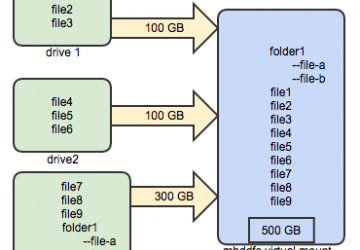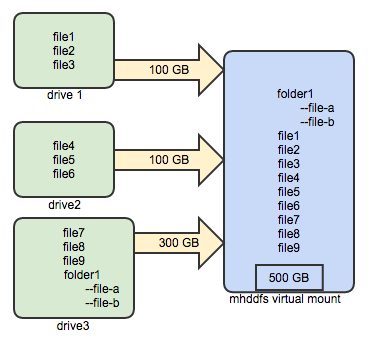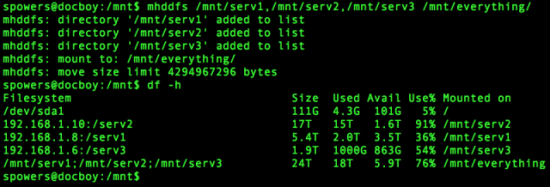Many Drives, One Folder

RAID is awesome, and LVM is incredibly powerful, but they add a layer of complexity to the underlying hard drives. Yes, that complexity comes with many benefits, but if you just want to spread your files across multiple storage locations, there's a much easier way.
The mhddfs program is a userspace application that creates a virtual mountpoint. Using standard drives (USB, network, RAID, whatever), it concatenates the storage into a single volume. When you write files to the virtual volume, it just saves them to the underlying drives until one of them fills up, then it moves to the next. Looking at the virtual mountpoint, you can't tell where one drive ends and the next starts, but because mhddfs writes directly to the underlying drives, you easily can look at them (and even remove them!) to see the individual file locations.
There's no RAID involved, there's no striping or mirroring, there's simply a single virtual mountpoint that shows the contents of all your drives in a single folder. It's a simple concept, but incredibly convenient if you need to have a single view of all your data spread across multiple drives. (See Figure 1 for a visual representation of the system in action, and Figure 2 to see it in use.)

Figure 1. The System in Action

Figure 2. Using mhddfs
Although mhddfs might be simple, it's incredibly useful. In fact, we found it so ingenious, we gave it this month's Editors' Choice award. You probably can install it from your distribution's repositories, but if not, visit the home page at https://mhddfs.uvw.ru. (The page is in Russian, but an English version is available.)










